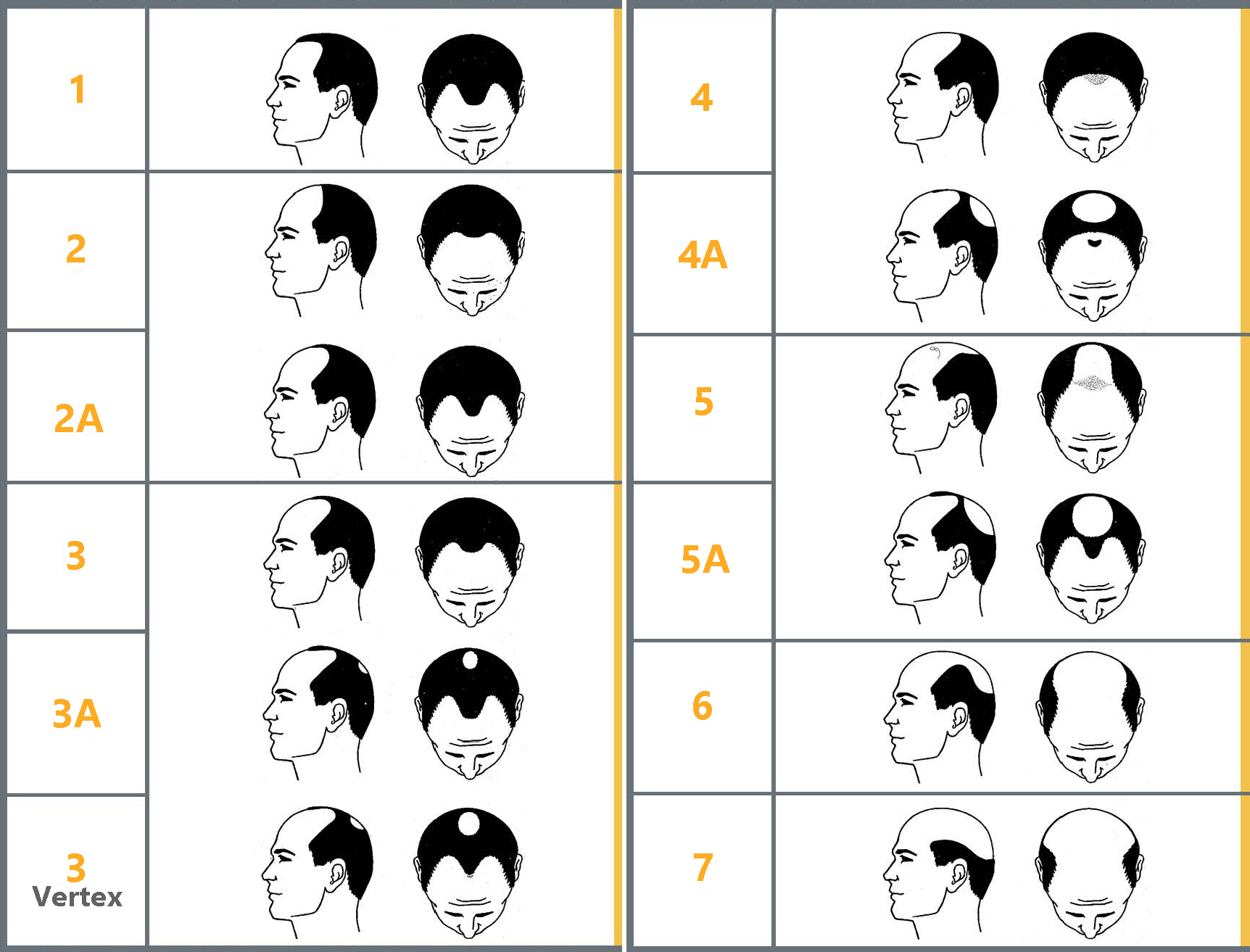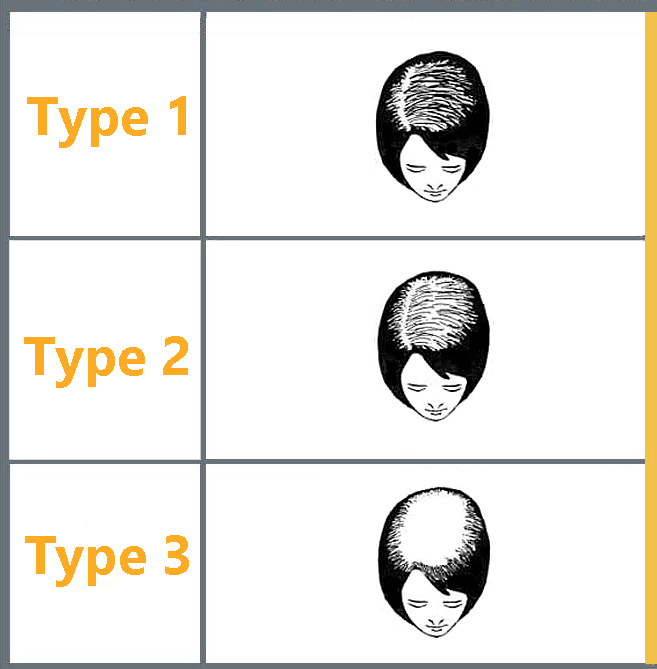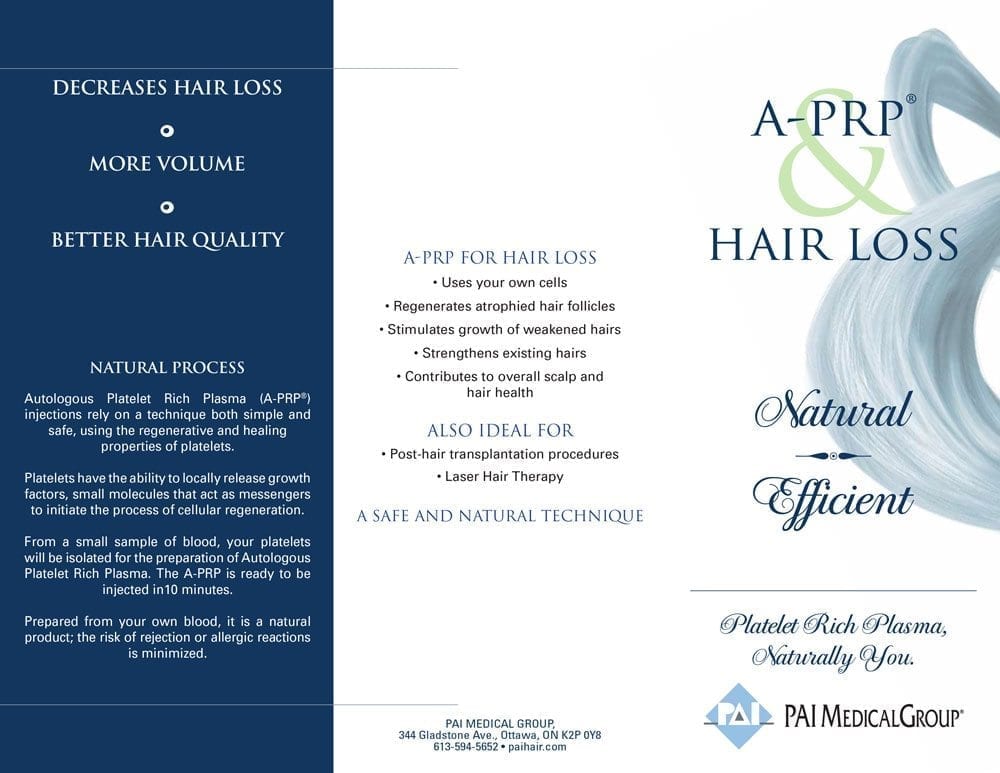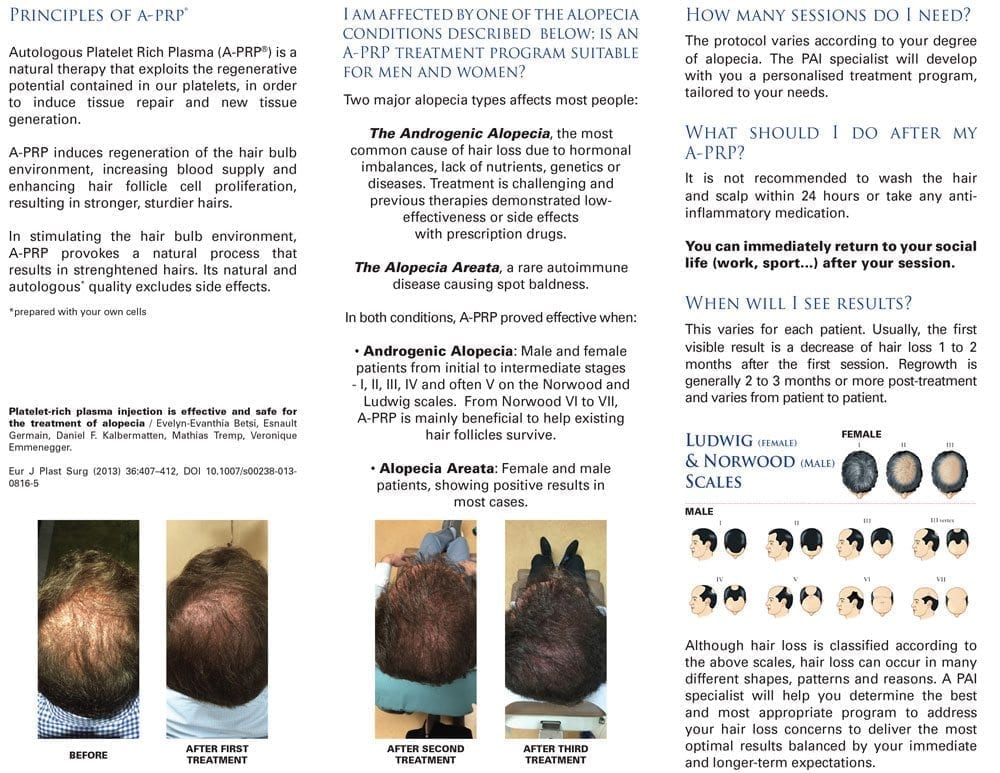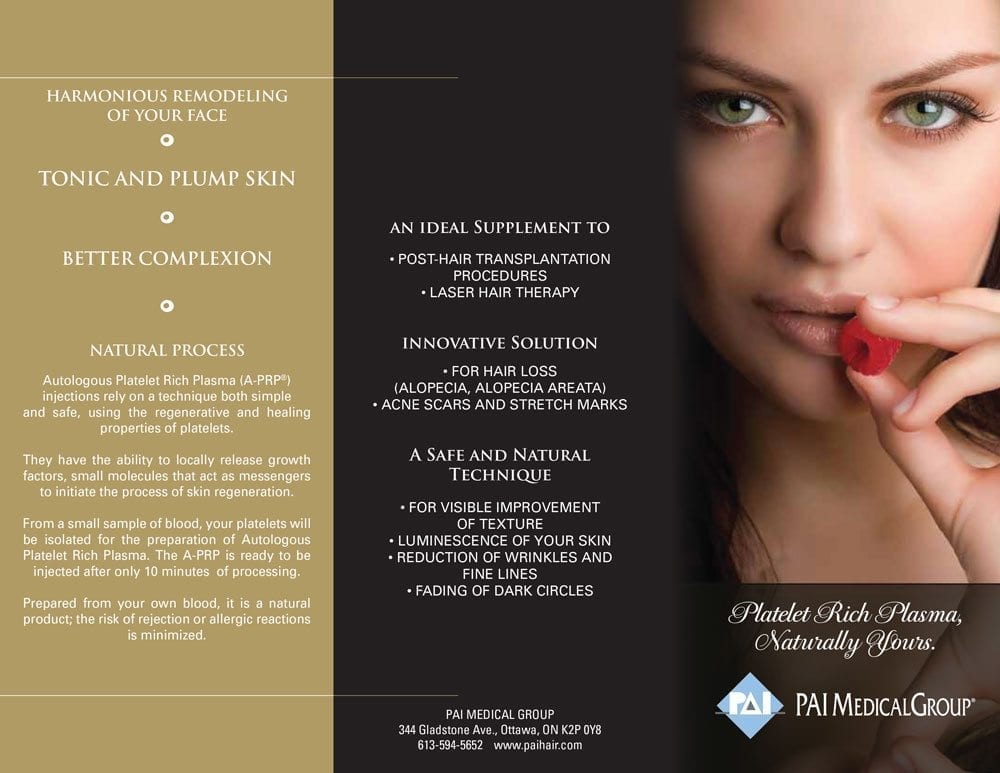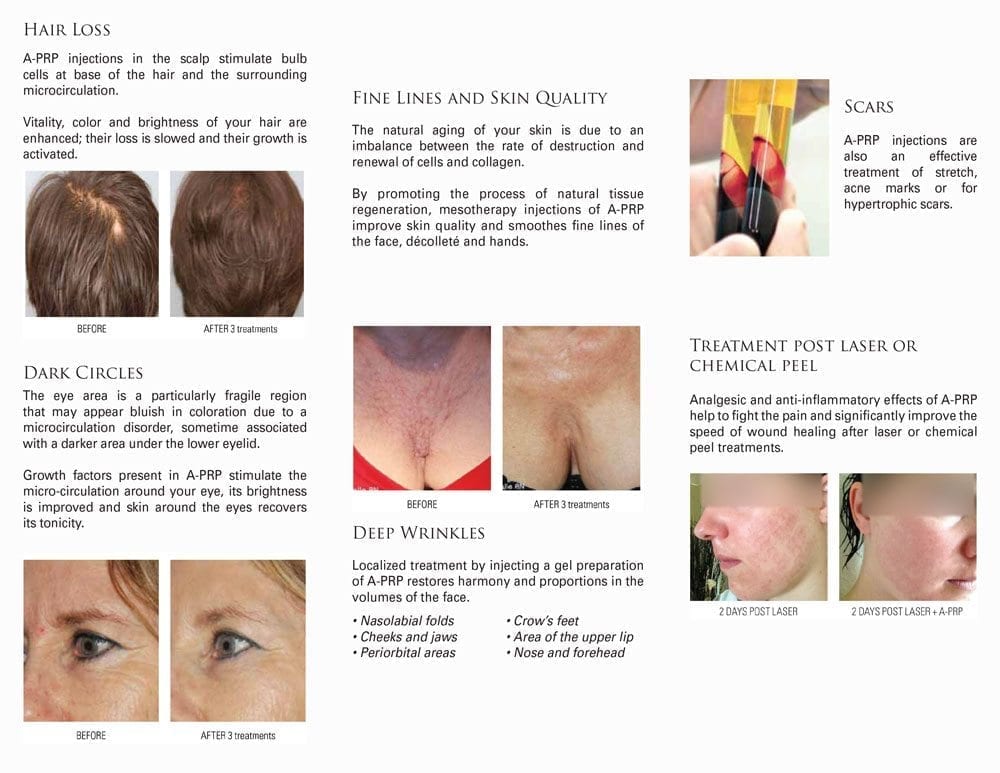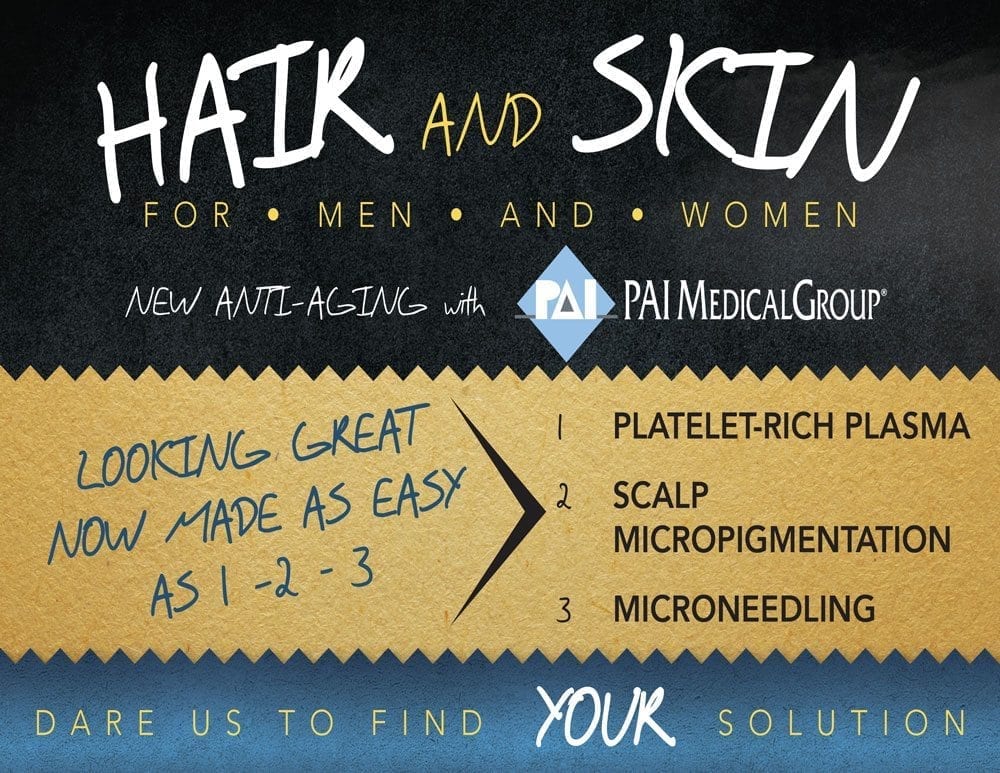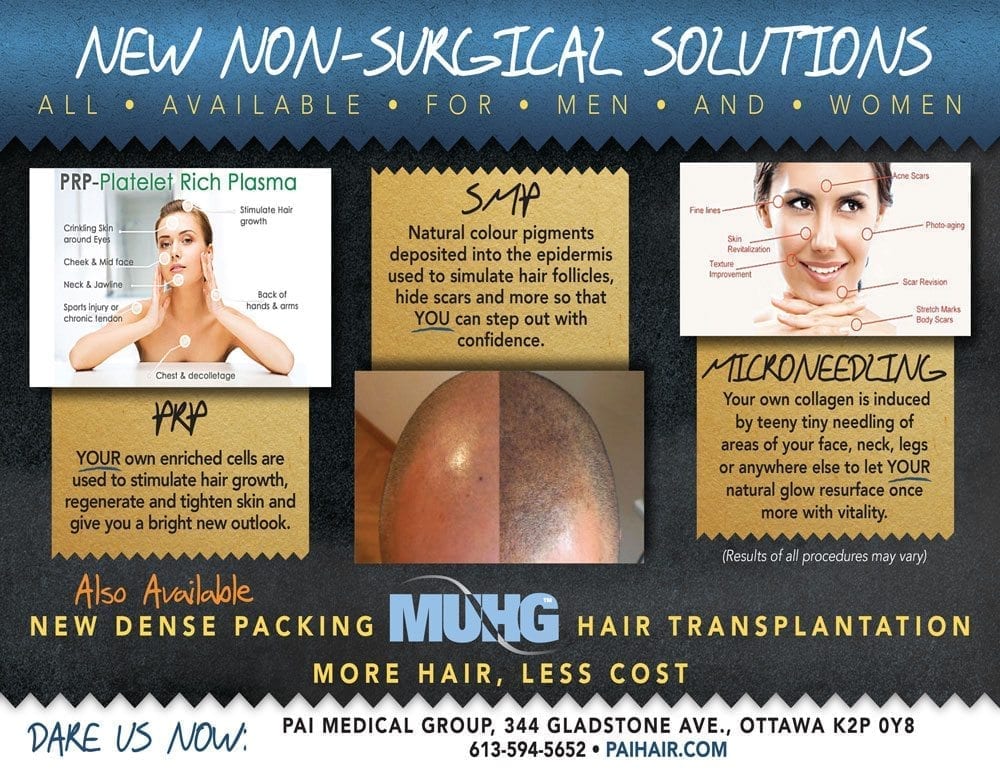Education Center
It can be confusing to understand what type of hair loss you actually have. Knowing your type helps determine the level of procedure you would take to restore your hair. Below is a chart and description of different levels of hair loss.
Men
Women
What Can I Expect?
From the moment you walk into one of our PAI Medical Group clinics for a consultation, you will know that your decision to find a solution for your hair loss with PAI is the right one. Your private, complimentary consultation with a qualified, trained hair restoration specialist will provide you with an expert opinion on your specific hair loss. Learn more about what to expect below.
 We are here to help you. Our physicians have trained our hair restoration consultants to discuss hair loss, how hair grows, how we lose it and the various options available. During this consultation, we will determine if you are a candidate for hair transplantation or if you will benefit from a hair loss prevention treatment program. Many of our PAI consultants have had hair transplants themselves. We will discuss your specific goals for your appearance, review your hair loss classification, and explain the various levels that can be achieved with our hair transplants procedures.
We are here to help you. Our physicians have trained our hair restoration consultants to discuss hair loss, how hair grows, how we lose it and the various options available. During this consultation, we will determine if you are a candidate for hair transplantation or if you will benefit from a hair loss prevention treatment program. Many of our PAI consultants have had hair transplants themselves. We will discuss your specific goals for your appearance, review your hair loss classification, and explain the various levels that can be achieved with our hair transplants procedures.
 It will take about an hour of your time and we invite you to bring your spouse or a friend to help you reach a decision about our company, our procedures, and the artistic expertise of our physicians. You will be asked to complete a confidential questionnaire about your goals and expectations in finding a solution for your hair loss, and about medications you are taking or allergies you may have. Your hair restoration consultant will show you a video and/or photographs of PAI Medical Group patients and you may also arrange to meet with someone who has had the procedure. If you would like a further consultation with a physician, we can set up an appointment for the first available opening.
It will take about an hour of your time and we invite you to bring your spouse or a friend to help you reach a decision about our company, our procedures, and the artistic expertise of our physicians. You will be asked to complete a confidential questionnaire about your goals and expectations in finding a solution for your hair loss, and about medications you are taking or allergies you may have. Your hair restoration consultant will show you a video and/or photographs of PAI Medical Group patients and you may also arrange to meet with someone who has had the procedure. If you would like a further consultation with a physician, we can set up an appointment for the first available opening.
Choosing the Right Transplant Doctor
The complex part of hair transplantation is the artistry required by the surgeon. Expertise comes from very carefully creating the individual’s look according to what is natural to their overall appearance. This may sound easy, but it is the most difficult part of the procedure because of the extreme variations in human appearance.
Everybody is different. For this reason every hair transplant will be different, and each and every aspect must be taken into account down to the finest detail. Everything from hair characteristics, including coarseness and color, to the shape of the individual’s head and face and the color of their skin.
For example, different techniques must be used on an individual with black hair as opposed to one with blond hair (a much smaller variation in graft sizes must be used with the darker hair and lighter skin tone). Great skill is required to design and create a natural-looking hairline that is correct for the shape of your face and for your age, now and in the future.
Unfortunately, there are many companies and physicians in the hair restoration field who are unable to attain a natural result. However, at PAI, the surgeons have perfected this natural look with their fine attention to detail.
Mentally Preparing Before and After Any Hair Transplant
You have made it through the tide of information concerning hair transplants and hair restoration surgery. You have had a consultation and discussed with your family or partner how hair loss has affected you. You have worked past the concerns with the cost and where to go. You have decided, ‘I want and I need a real hair loss solution! I’m going in for hair transplant surgery!’ Now what?
If you are in this situation, you have made a great choice. Be confident that you are going to look great when your hair begins to grow back like you hoped it would. Your appearance will be something you are proud of. Remember, this is your body and your hair; if you aren’t pleased and satisfied with your appearance it shows. Going through the hair transplant process, with PAI Medical, is the easy part. It is allowing your body to heal and giving your hair time to regrow that takes patience. Talking with a hair transplant specialist is often the best medicine for ‘cold feet’ before a transplant procedure and a good reality check afterwards.
If you aren’t in this situation yet, you have come to the right place! People considering hair loss solutions involving surgery have often already tried everything else. Traditional methods of changing diet and stress management have had no effect, purchasing the creams and using chemicals has left you wanting. It is true to say however, that the leap from ‘thinking’ to ‘doing’ is a big one.
Here are a few questions you will want to consider:
- How long have you been losing your hair?
- Are you comfortable with the length of time after surgery it takes hair to regrow?
- Are you open to discussing your hair loss? One on One? With Family Members?
- Have you researched the hair transplant procedure? Have you found the truth or are you listening to myths about hair grafts, transplants and implants?
- Have you talked to a hair transplant specialist?
Don’t rush into any surgery. But, take the time to educate yourself on what is involved in the hair transplant and restoration process. The only bad question is the one you don’t ask a professional. Consultations are free and so is the phone call. We are here to help and educate, not convince you. The choice is yours but you aren’t alone. Join the millions enjoying a renewed sense of self. We can Help!
Your hair restoration plan will be reviewed, and you will be asked to sign a consent form, indicating that you have been fully informed about every aspect of your surgery. A series of preoperative photographs will be taken.
 The coordinator will discuss placement of your hairline, which is moderated by the density and quality of the available donor hair. The artistry and experience of the surgeon will help you meet your realistic expectations. The number and size of grafts needed for the current session will then be estimated.
The coordinator will discuss placement of your hairline, which is moderated by the density and quality of the available donor hair. The artistry and experience of the surgeon will help you meet your realistic expectations. The number and size of grafts needed for the current session will then be estimated.
After routine preparations, you will receive local anesthetic at the donor and recipient sites. Donor hair from the back or sides of your head will be harvested and transplanted to thinning or balding areas. Transplant sites are angled toward the nose. Grafts are randomly placed and spaced to approximate a natural growth pattern, thus avoiding a ‘doll’s head’ or ‘cornrow’ appearance and also ensuring adequate blood supply for each individual graft.
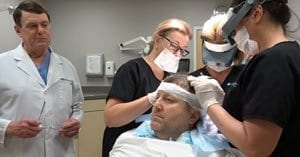 If your procedure includes refinement of a previous hair transplantation, it may involve the removal of ‘plug’ grafts along the frontal border and the subsequent re-sectioning of the ‘plug’ into mini or micro units for implantation into another site. Subsequent repair sessions will soften the abrupt hairline and fill in the newly created gaps. This produces a more natural and esthetically acceptable hairline.
If your procedure includes refinement of a previous hair transplantation, it may involve the removal of ‘plug’ grafts along the frontal border and the subsequent re-sectioning of the ‘plug’ into mini or micro units for implantation into another site. Subsequent repair sessions will soften the abrupt hairline and fill in the newly created gaps. This produces a more natural and esthetically acceptable hairline.
After your procedure is complete and your scalp has been inspected to ensure that grafts are secure, a medicated non-adherent pressure dressing is applied. This remains in place overnight, and is removed the next morning, when your donor and recipient sites are cleansed. You may return to work that same day.
You will be given detailed verbal and written instructions for care of your scalp, and any additional medications that you might need will be provided before you leave.
Activity should be restricted during the first 24 hours after the procedure, and strenuous exercise should be avoided for five to seven days. Alcohol, aspirin, aspirin-like medications, and vitamin E must be avoided for two days.
Additional and detailed instructions will be given at the pre-op session with the PAI nurse or hair loss consultant, and, at the post-op session with the PAI hair transplant physician.
Within four to six weeks, the graft hairs will fall out, but the dormant follicles remain. At approximately three to five months, new hairs will appear and grow at the normal rate of about 1 cm per month. The onset of hair growth may be delayed with subsequent transplant sessions. Your consultant may recommend hair hygiene treatments to stimulate hair growth.
A detailed questionnaire is routine before your first meeting with a PAI hair loss consultant. The answers will help guide the discussion to the best alternatives for your hair loss issues. Herein is a Questionnaire that can be downloaded and filled out or filled out and submitted to PAI beforehand.
Download a copy of our questionnaire below:

